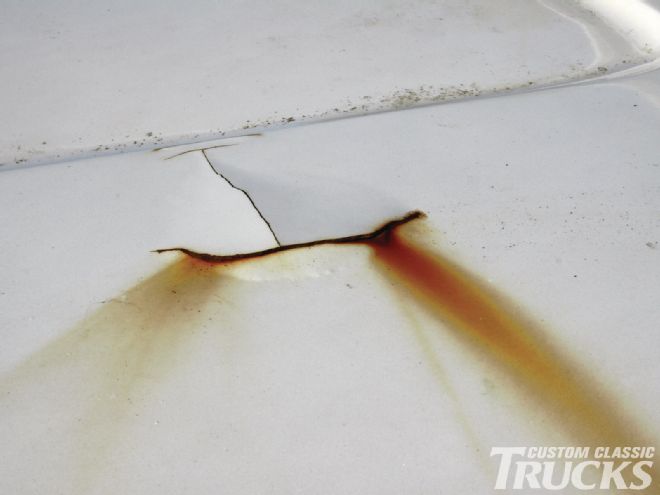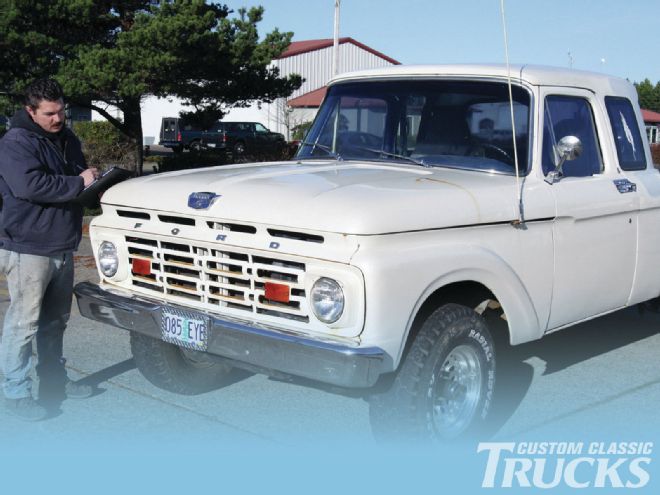
Building a custom classic cruck can be an overwhelming activity, particularly when lots of bodywork is required. But one of the tricks to making a truck project manageable is to look at individual parts instead of the entire thing. That’s what Jake Brazille did with this ’64 Ford.
Built by his father in 1996, the pickup’s cab was extended 14 inches and then all the early sheetmetal was dropped onto an ’87 chassis. Since completion, the truck has seen plenty of use and the rigors of a truck being used like a truck has left some scars. As Jake is in the body shop biz, none of the needed repairs presented problems, the only difficulty has been finding the time to make them. So, rather than blow the truck apart, Jake sneaks in a few hours here and there and is fixing the Ford a piece at a time. As that’s not unlike the way most of us work on our trucks, we decided to follow along as he made some typical repairs, fixing dents and eliminating rust, to show how they are done. Removing a simple dent is a matter of knocking down the high spots with the hammer and supporting the low areas with a dolly; and while that sounds easy enough the learning curve is steep. But the best teacher is experience and you only get that one way.
 Jake Brazille, of Jake’s Place in Florence, Oregon, decided it was time to make some repairs to his Dad’s once pristine pickup. The first step was assessing what had to be done. It was decided to start with the hood.
Jake Brazille, of Jake’s Place in Florence, Oregon, decided it was time to make some repairs to his Dad’s once pristine pickup. The first step was assessing what had to be done. It was decided to start with the hood.
If there is one lesson to be learned when repairing dents it’s to never hammer on one side of a panel without backing up the other side with a dolly. The hammer should have some crown, or a high spot in the center so the hammer blows can be concentrated on the dent, not the surrounding metal. That’s why you don’t use any old hammer other than one designed for bodywork. (For a rundown on body tools, check out the August, 2011 issue of CCT.) Dollies come in a variety of shapes so finding one that is the proper contour for the panel isn’t normally a problem.
Although there are a variety of methods to repair rust, the best way is to cut it out and weld in new metal. Thanks to wire feed welders this particular task is considerably easier than it once was, but caution is still required to keep from warping the metal with too much heat. Lots of tack welds work better than one continuous bead.
Follow along as Jake makes some basic repairs that many trucks will need, maybe yours is one of them. Start in one area, take your time and stick around for more tips on bodywork that you can do at home. CCT